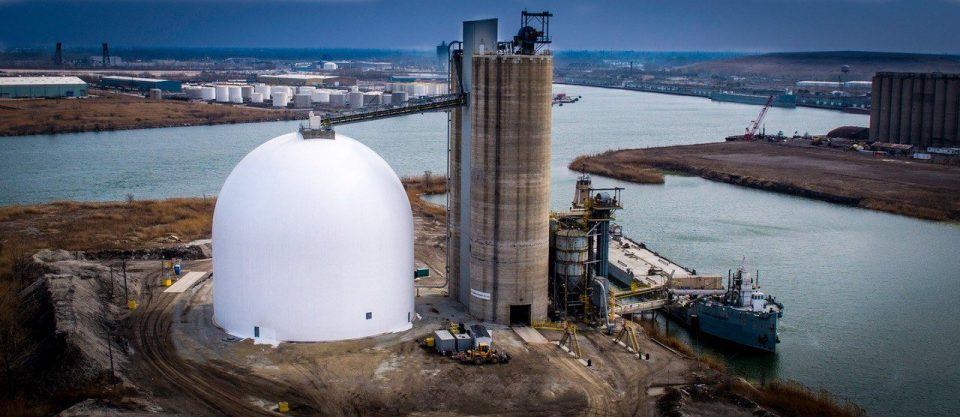There are plenty of options when it comes to bulk conveyance. Here are some of the most common systems on the market today:

1. A typical belt-conveyor system requires significant linear footage; as the belt climbs, the material wants to slide backward, so the angle of incline has to be adjusted accordingly. However, looking at options beyond the traditional can shorten conveyor distances, and most of the means of reducing the distance are increasing the traction or holding ability of the material.
2. Using a cleated belt isn’t especially popular but is an option that yields higher angles and shorter systems. A belt with ribs is installed to better hold product and reduce slippage. Any product that can be moved via belt conveyor can be moved on a cleated belt; this means products like cement that don’t have enough strength to hold themselves together should be handled another way.
3. For a pipe or tube conveyor, the belt is formed into a tube that holds onto the product. This system is more robust because essentially you’re pushing a plug of material into the belt, and as it inclines, the plug of material pushes the other material up and keeps it moving along.
4. A similar advantage is achieved with a sandwich belt conveyor, where two belts face each other and sandwich product. These can practically travel vertically. Only a limited number of suppliers build this product, making it as much as three times the cost of traditional single-belt systems on a foot-for-foot comparison, but companies save on length and may end up overall having less expense with savings in overruns and transfer towers.
5. Bucket elevators work well for some industries; though they cost less up front, they do require considerable maintenance. This system is questionable for companies handling coal, sugar, wood pellets, and other combustible products because a column of combustible dust can potentially build up, confined within the body of the elevator, and can lead to deflagration. Another drawback is their limited capacity, so for ship terminals with high throughput, bucket conveyors might not be an option—but they do save a lot of land space.

6. Pneumatic conveyors are ideal for handling cement, gypsum, flyash and other powder products and boast more versatile routing options. The system requires a pump, compressor(s), airlock, and piping, but in most cases a 15 X 20 building can house the compressor equipment.
Loading and unloading
The typical model for unloading product is a 20- to 30-foot-deep pit with a hopper that moves product onto a feeder conveyor coming out of the ground. But for facilities near water and with soggy soils, the pit’s excavating, dewatering, and waterproofing costs alone can be prohibitive.
Systems are available for unloading at grade or into a shallow pit. For instance, a rail car might pull directly over one of the Ashross RUM models, which provide either shallow in-ground or above-grade conveyance via a walking floor. Facility managers have to allow time for the system to unload the product, rather than just dropping it and advancing the cars, so logistically it may be slower, but customers can save on pit size.
For truck delivery, Superior’s RazerTail Truck Unloader utilizes an unloader hopper that feeds product onto a transfer conveyor right at grade, but this system also requires customers to wait until the product is entirely unloaded—no drop and go.
Alternative systems like these can be expensive, but considering the cost of excavations, dewatering, sheet piling, and dealing with nuisance water, the costs might not be so bad.
Let our team help you plan your optimal bulk conveyance. Click here to contact one of our team members.